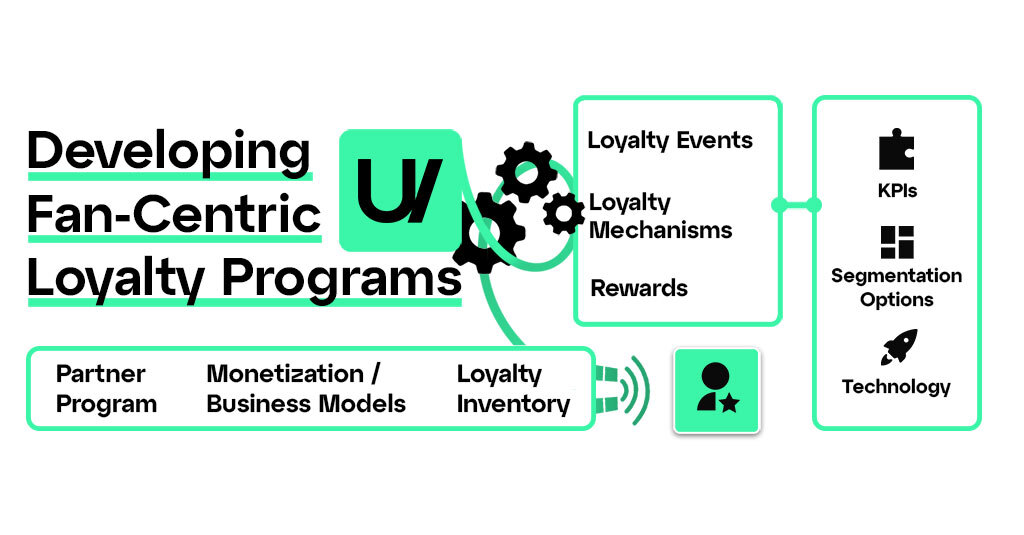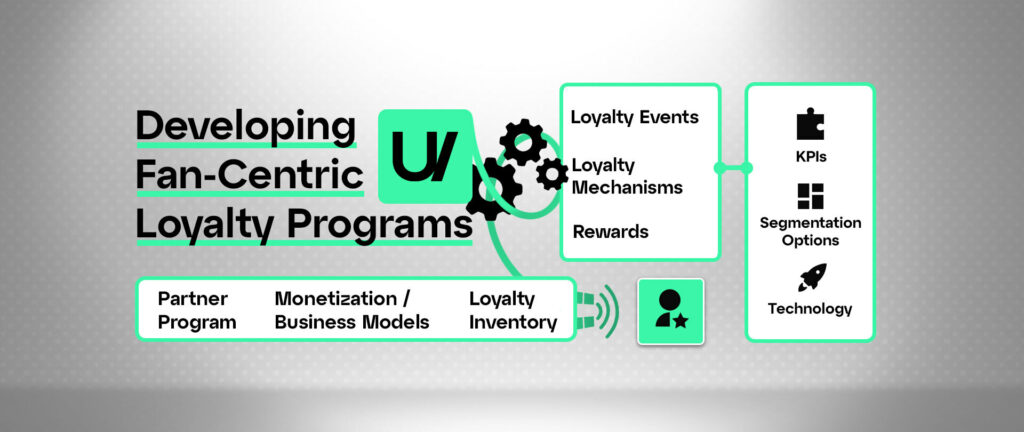Introduction
In sports, fan engagement is more than just raw viewership; it embodies a deep-seated loyalty and emotional connection that fans harbor toward their beloved teams. Unlike traditional loyalty programs by retailers, sports organizations are privileged to have fans – individuals already highly engaged and inherently more loyal than the average customer. However, the inherently emotional nature of sports fandom demands loyalty schemes distinct from those employed by retailers or e-commerce companies.
They need to do more than simply reward transactions – they must resonate on an emotional level, ensuring they cater to the hearts of fans as much as their actions to foster a genuine sense of belonging and connection. Moreover, most sports organizations have several partners who are important commercially and, more importantly, likely able to add to the overall value proposition of the loyalty program.
That’s why we developed a methodology for designing fan-centric loyalty programs. We are using it in our projects with clubs, leagues, and associations looking to implement a gamified loyalty scheme with Unyfy. Today, we share it with anyone interested in or working on those topics.
The Unyfy Methodology for Developing Fan-Centric Loyalty Programs

1. Loyalty Events
The first step involves defining the range of fan actions, both digital and physical, that qualify as loyalty events. This might include anything from engaging with apps or on social media, attending games, or purchasing merchandise. It’s the foundation for any fan-centric loyalty scheme. To identify the right types of events with our clients, we ask a few questions that help us to guide the way:
- Which fan activities create the most value for your organization?
- Which fan activities create the most value for your partners?
- Which activities are beloved by your fans
2. Loyalty Mechanisms
Next, we design the “loyalty mechanism”. We use the term to describe the mechanism by which loyalty events are rewarded and which in turn grant access to the benefits that the loyalty program offers fans. Common loyalty mechanisms are loyalty points, badges, or trophies, which users receive or “earn” when they carry out loyalty events. This also may include additional gamification mechanisms such as rankings, fan profiles, and others.
3. Rewards and Experiences
Based on the first steps, we create a tiered reward system that offers fans tangible benefits like discounts, exclusive merchandise, tickets, and unique experiences of the “money-can’t-buy” variety such as signed merch, personalized videos, or meet-and-greets. These rewards are pivotal in strengthening the emotional and loyal bond between fans and the sports organization.
4. Partner Program
In this step, we define a partner program that allows existing and potential new partners to integrate with the organization’s loyalty scheme. The goal is to provide additional benefits to fans and create new revenue streams for the partners and, of course, the organization itself.
There are various forms a partner program can take but most likely it will involve bounties, discounts, and maybe the option for partners to define their own loyalty events that get rewarded as well (e.g. signing up for a newsletter or buying in their shop). Access to the partner program may either be a premium right or – as I recommend to most clients – come with a lower entry barrier than traditional partnerships. In the latter case, it can help form new relationships with local and global businesses alike.
5. Loyalty Inventory
Loyalty inventory refers to new types of marketable inventory created within the loyalty program, offering innovative ways for partners to engage with fans. Unlike the commercial integration on the partner program level, loyalty inventory is focused on branded messaging to fans.
6. KPIs
Key performance indicators are essential for assessing the loyalty program’s impact, focusing on metrics that reflect the program’s success in enhancing customer lifetime value (CLV), engagement, satisfaction, and overall financial performance.
7. Personalization with Segmentation
Behavioral segmentation allows for the customization of the fan experience, leveraging data from the loyalty program to tailor interactions and rewards, thereby maximizing the value of each fan relationship.
8. Technology Solution
The selection of technology solutions that support the loyalty program’s objectives is crucial, ensuring seamless integration with existing systems and the ability to meet new requirements.
Conclusion
The essence of building fan-centric loyalty schemes in sports lies in transcending traditional transactional approaches to foster genuine emotional connections. By carefully crafting programs that recognize and reward fan loyalty while resonating with their emotions, sports organizations can ensure their loyalty schemes truly “feel right” for their fans, reinforcing the bonds that make sports a unique and passionate experience.
For sports organizations eager to develop deeper connections with their fans through bespoke loyalty schemes, Unyfy stands ready to provide the expertise and solutions needed to bring these initiatives to life. You can join our Loyalty and Gamification Masterclass if you want to learn more. Or get in touch to discover how we can assist you in launching a loyalty program that truly speaks to your fans, on both an emotional and commercial level.
